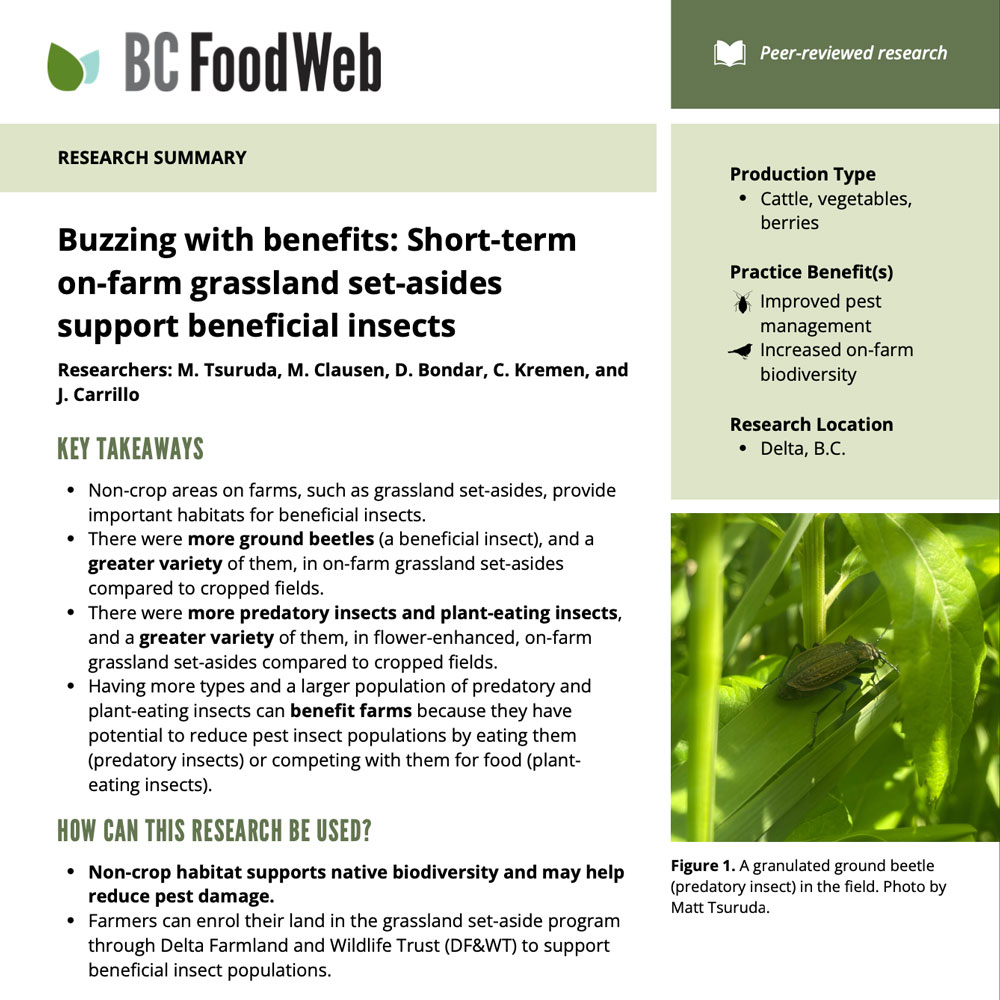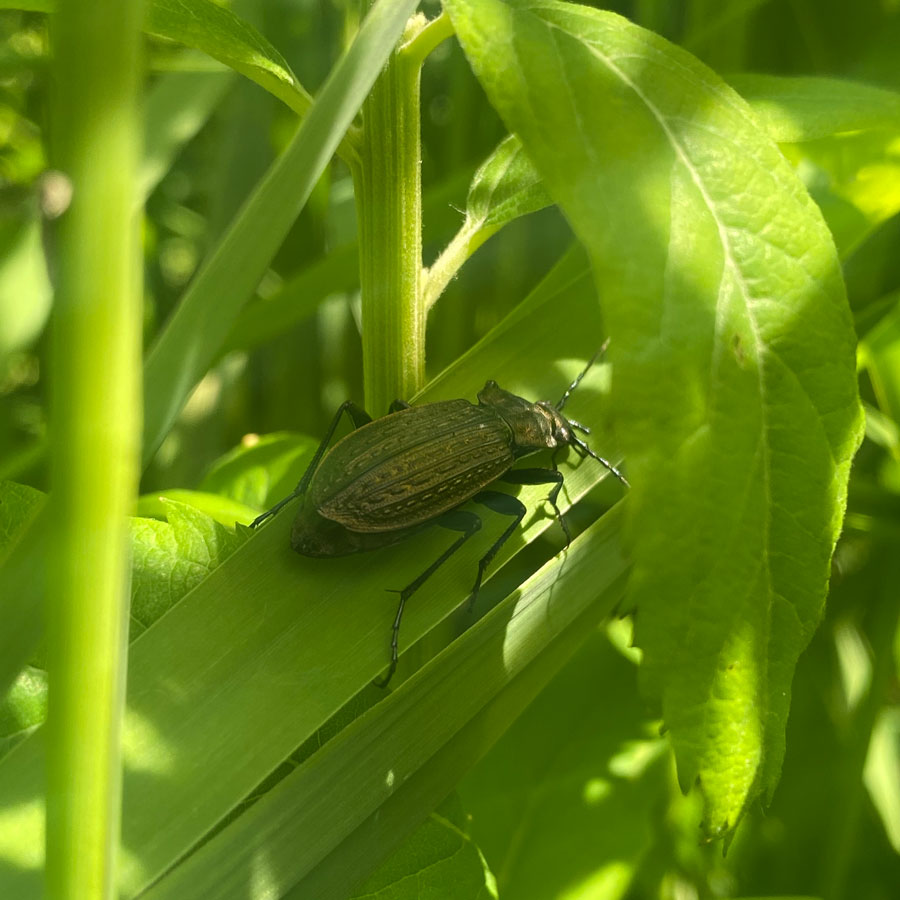Buzzing with benefits: Short-term on-farm grassland set-asides support beneficial insects
Introduction
We studied how on-farm grassland set-asides affect the number and variety of both beneficial predatory insects and plant-eating insects compared to conventionally managed cropped fields. Insects are vital to agriculture as they provide pollination, pest control, and nutrient cycling. However, terrestrial insect populations are declining by up to 10% each year as a result of factors such as habitat loss, pesticide use, and climate change. Farmers can help reverse this trend by creating non-crop habitats, such as short-term grassland restorations, which support beneficial insects that, in turn, can provide benefits to crop production.
About this Brief
This brief was prepared by Juliana Cao from the BC Food Web team with the help of Matt Tsuruda and is based on the following scientific journal article:
Tsuruda, M., Clausen, M., Bondar, D., Kremen, C., & Carrillo, J. (2024). Short-term grasslands in agriculture support both natural enemy and phytophagous arthropod populations. Journal of Applied Entomology, 149(1), 100-110. https://doi.org/10.1111/jen.13364
Have Feedback or Questions?
Let us know your thoughts about the brief at bc.foodweb@ubc.ca.
Key Findings
- Non-crop areas on farms, such as grassland set-asides, provide important habitats for beneficial insects.
- There were more ground beetles (a beneficial insect), and a greater variety of them, in on-farm grassland set-asides compared to cropped fields.
- There were more predatory insects and plant-eating insects, and a greater variety of them, in flower-enhanced, on-farm grassland set-asides compared to cropped fields.
- Having more types and a larger population of predatory and plant-eating insects can benefit farms because they have potential to reduce pest insect populations by eating them (predatory insects) or competing with them for food (plant-eating insects).



